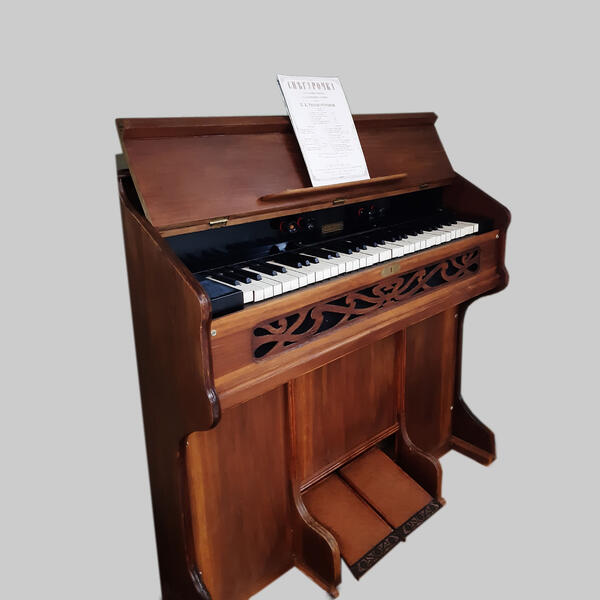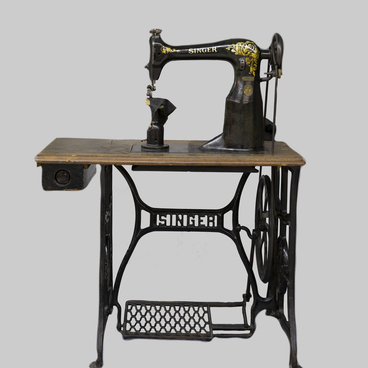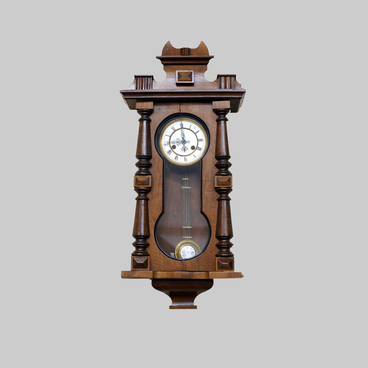In the early 20th century, physharmonica became a popular home instrument among factory owners and merchants of the Izhevsk factory. The exhibited physharmonica was made at the factory of Jul. Heinr. ZImmermann. Julius Heinrich Zimmermann was a musical instrument manufacturer and a music publisher of the German origin. He worked in the Russian Empire for a long period of time. In 1904, Zimmermann acquired the piano factory of Gustav Fiedler and continued producing keyboard instruments under the same name and under his own name, Jul. Heinr. Zimmermann.
A physharmonica is a floor-standing musical instrument of the harmonic family with a piano keyboard. It features free-running metal tongues, which are driven into oscillating motion by an air jet. The performer presses the pedals at the bottom of the instrument: the physharmonica is controlled not only by the hands but also by the feet. The pitch of the sound is changed due to the flaps at the bottom.
The first physharmonica was designed by Anton Haeckle in Vienna in 1818. The first physharmonicas were quite simple instruments. After the Paris craftsman Alexandre-Francois Debain updated the instrument, it gained its modern look.
The French physharmonica of the second half of the 19th century resembled a smaller piano. Its keyboard was of the organ (piano) type. The inner vocal part of the physharmonica was divided into two parts; therefore the keyboard seemed to be divided as well. The left part range went from C2 of the great octave to E4 of the 1-line octave, while the right part went from F4 of the 1-line octave to the 4-line octave.
A physharmonica featured a special sound and was capable of reproducing the intonation of the human voice. Like no other instrument, it was suitable for soft and delicate melodies at a slow pace, especially for church music. One of the first records about a physharmonica in Russia dates back to 1846, when the instrument appeared in the Catholic chapel of the Nerchinsk plant in Eastern Siberia. Physharmonicas were popular home instruments in Russia and in Europe in the second half of the 19th century— the early 20th century.
A physharmonica is a floor-standing musical instrument of the harmonic family with a piano keyboard. It features free-running metal tongues, which are driven into oscillating motion by an air jet. The performer presses the pedals at the bottom of the instrument: the physharmonica is controlled not only by the hands but also by the feet. The pitch of the sound is changed due to the flaps at the bottom.
The first physharmonica was designed by Anton Haeckle in Vienna in 1818. The first physharmonicas were quite simple instruments. After the Paris craftsman Alexandre-Francois Debain updated the instrument, it gained its modern look.
The French physharmonica of the second half of the 19th century resembled a smaller piano. Its keyboard was of the organ (piano) type. The inner vocal part of the physharmonica was divided into two parts; therefore the keyboard seemed to be divided as well. The left part range went from C2 of the great octave to E4 of the 1-line octave, while the right part went from F4 of the 1-line octave to the 4-line octave.
A physharmonica featured a special sound and was capable of reproducing the intonation of the human voice. Like no other instrument, it was suitable for soft and delicate melodies at a slow pace, especially for church music. One of the first records about a physharmonica in Russia dates back to 1846, when the instrument appeared in the Catholic chapel of the Nerchinsk plant in Eastern Siberia. Physharmonicas were popular home instruments in Russia and in Europe in the second half of the 19th century— the early 20th century.



